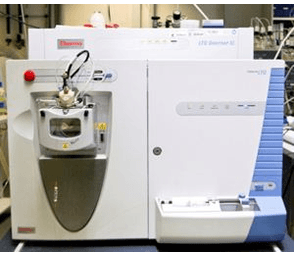IMPROVED HIGH-PERFORMANCE LIQUID CHROMATOGRAPHY/MASS SPECTROSCOPY (HPLC/MS) METHOD FOR DETECTION OF ANTHRAQUINONES AND ANTIOXIDANT POTENTIAL DETERMINATION IN ALOE SINKATANA
Keywords:
Aloe sinkatana, anthraquinones, antioxidant, free radicals, HPLC/MS, medicinal plantsAbstract
Objectives: Medicinal plants, either as an extract, pure compound or as a derivative, offer limitless opportunities for the discovery of new drugs. Sudan is a very rich source of medicinal plants which are used in the treatment of a wide range of diseases. Aloe sinkatana, has great potential to be developed as drug by pharmaceutical industries. The present study is undertaken to investigate the antioxidant potential of Aloe sinkatana by DPPH radical scavenging activity. In addition, the study also performed to explore the possibility of using HPLC-MS technique for the determination and analysis of Aloe sinkatana.
Methods: The extracts of Aloe sinkatana were analyzed for antioxidant activity by using DPPH free radical scavenging activity. The results indicated that the extracts showed a high effective free radical scavenging in the DPPH assay, also these extracts exhibited a noticeable antioxidant effect at low concentrations.
Results: During in vitro evaluation the antioxidant potential of methanolic extract was the highest, followed by aqueous extract in DPPH radical scavenging activity. So the methanolic extract of the plant, exhibited a great antioxidant effect at 50 μg/ml which may be attributed to high phenolic content. Therefore, methanolic extract to be a more active radical scavenger than aqueous extract. The HPLC-MS analysis had shown the methanolic extract of Aloe sinkatana to be rich in the major anthraquinones and their glucosides, which revealed 9 compounds, and also UV spectroscopy detected the presence of two flavonoids.
Conclusion: The results indicated that the extracts of Aloe sinkatana is a potential source of natural antioxidants or nutraceuticals with potential application to reduce oxidative stress with consequent health benefits. Due to stronger antioxidant potential and phytochemical composition, Aloe sinkatana could be proved as a valuable prospect in pharmaceutical formulations by taking part in the antioxidant defense system against generation of free radicals.

Peer Review History:
Received 5 February 2020; Revised 13 March; Accepted 27 April; Available online 15 May 2020
Academic Editor: Dr. Ali Abdullah Al-yahawi , Al-Razi university, Department of Pharmacy, Yemen, alyahawipharm@yahoo.com
, Al-Razi university, Department of Pharmacy, Yemen, alyahawipharm@yahoo.com
Reviewer(s) detail:
Prof. Cyprian Ogbonna ONYEJI , Obafemi Awolowo University, Ile-Ife, Nigeria, conyeji@oauife.edu.ng
, Obafemi Awolowo University, Ile-Ife, Nigeria, conyeji@oauife.edu.ng
Dr. Gehan Fawzy Abdel Raoof Kandeel , Pharmacognosy Department, National Research Centre, Dokki, 12622, Giza, Egypt, gehankandeel9@yahoo.com
, Pharmacognosy Department, National Research Centre, Dokki, 12622, Giza, Egypt, gehankandeel9@yahoo.com
Dr. Nyunaï Nyemb , Ministry of Scientific Research and Innovation of Cameroon, nyunain@yahoo.fr
, Ministry of Scientific Research and Innovation of Cameroon, nyunain@yahoo.fr
Downloads

Published
How to Cite
Issue
Section

This work is licensed under a Creative Commons Attribution-NonCommercial 4.0 International License.









 .
.